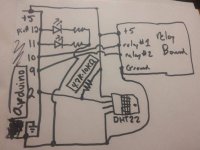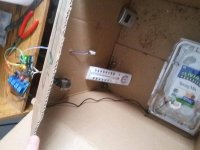Can of Bliss
Member
This is pretty sloppy, but it's simple. The resistors on the LEDs depend on the LEDs you're using.
I've been using this without the 4.7k-10k resistor without problems, but from what I've read, it's best to use it (I'll eventually find one).
I've been using this without the 4.7k-10k resistor without problems, but from what I've read, it's best to use it (I'll eventually find one).






